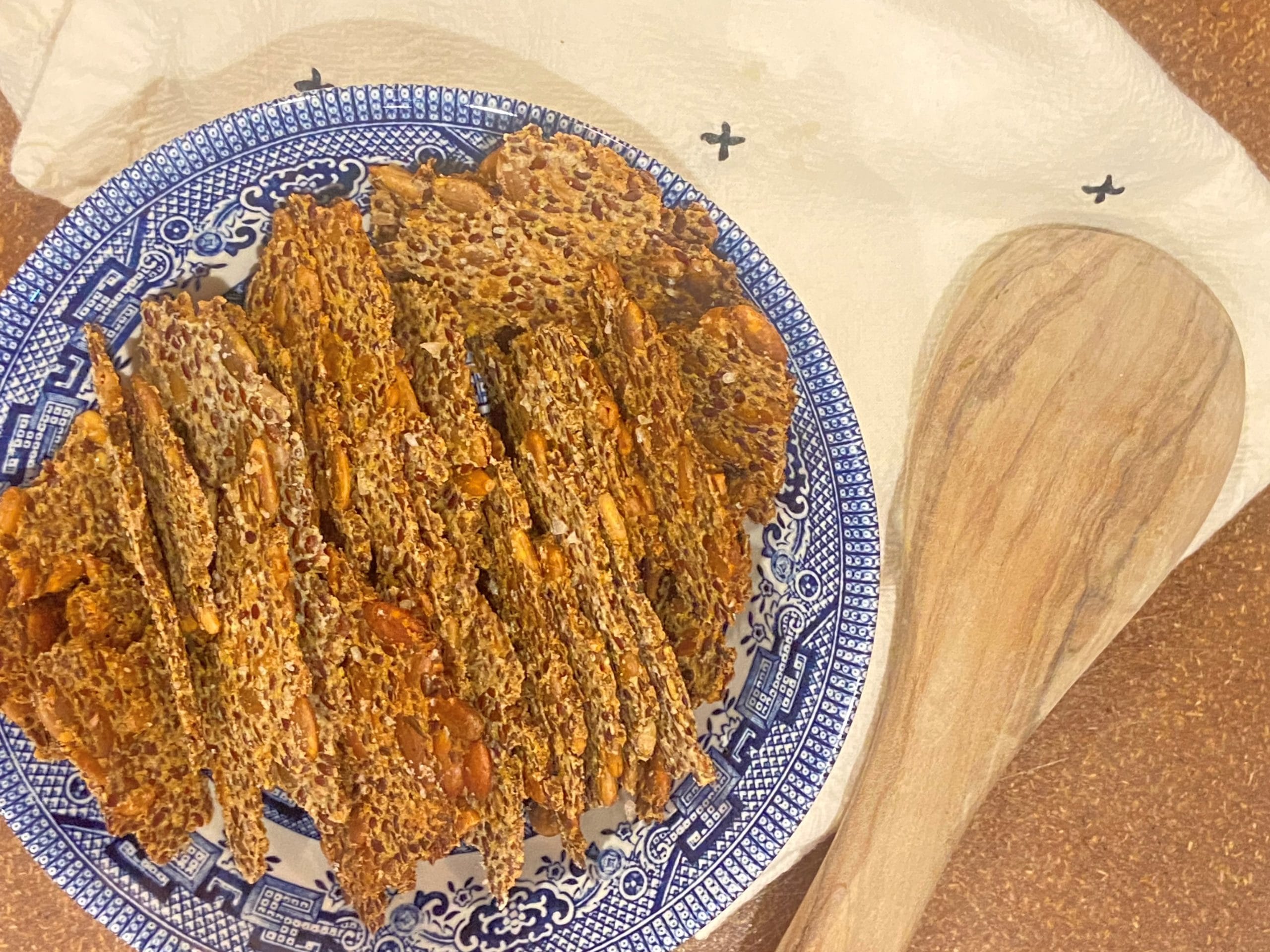Striped bass: the fish that's swimming its way into our hearts and onto our plates. Why is everyone hooked on this aquatic sensation? Well, the short answer is: it's delicious! But that's just the beginning. In this article, we'll dive deeper into the world of striped bass and uncover its secrets that will leave you craving for more. Get ready for a mouthwatering adventure!
What is Striped Bass and How to Choose the Best Quality for Your Dishes
Striped bass is a type of fish that is highly sought after for its delicate flavor and versatility. It has become a popular choice for chefs who want to create meals with a unique flavor profile. This article will discuss the different types of striped bass available, how to choose the best quality for your dishes, and some tips on how to cook and serve it.

Delicious Striped Bass Recipes for Every Occasion
Striped bass is an incredibly versatile fish that can be cooked in a variety of ways. Whether you’re looking for a light and healthy dinner or a decadent feast, it can be the star of the show. Here are a few delicious recipes that are sure to please everyone at your next gathering!
Grilled Striped Bass with Lemon and Herbs
This recipe is perfect for a summer barbecue. Simply season the fish with salt and pepper, then grill it over medium-high heat until it's cooked through. Top with a mixture of chopped herbs, lemon zest, and olive oil for a fresh and flavorful finish.
Pan-Seared Striped Bass with Garlic and Butter
For a simple yet delicious dinner, try pan-searing with garlic and butter. Heat a skillet over medium-high heat, then add minced garlic and cook until fragrant. Add the fish to the skillet and cook until golden brown on both sides. Finish with a squeeze of lemon juice and a sprinkle of chopped parsley.
Striped Bass Ceviche
For a refreshing and light dish, try making ceviche. Cut the fish into small pieces and marinate it in lime juice for at least an hour. Add diced tomatoes, red onion, jalapeno, and cilantro for a flavorful and colorful dish.
Striped Bass Tacos
Tacos are always a crowd-pleaser, and striped bass makes a great filling. Season the fish with chili powder, cumin, and salt, then grill or pan-sear until cooked through. Serve in warm tortillas with avocado, salsa, and a squeeze of lime juice.
Baked Striped Bass with Tomatoes and Olives
For a one-pan meal, try baking your striped bass with tomatoes and olives. Place the fish in a baking dish and top with sliced tomatoes, olives, garlic, and herbs. Bake in the oven until the fish is cooked through and the tomatoes are soft and juicy.
Striped Bass Chowder
Chowder is a classic comfort food. Start by sautéing onions, celery, and carrots in a pot, then add diced potatoes and fish stock. Add chunks of striped bass and simmer until the fish is cooked through. Finish with cream and fresh herbs for a rich and satisfying soup.
Striped Bass Poached in White Wine
Poaching is a gentle cooking method that results in tender and flavorful fish. In a large pot, combine white wine, water, lemon slices, and herbs. Bring to a simmer, then add the fish and cook until opaque and cooked through. Serve with a simple salad or roasted vegetables for a light and elegant meal.
Tips & Tricks for Perfectly Preparing and Cooking Striped Bass
With the right tips and tricks, you can prepare and cook striped bass perfectly every time.
Choose the right cut
When cooking, it's important to choose the right cut. Fillets are the most common cut and are great for grilling, baking, or pan-searing. Whole fish can also be cooked, but require more preparation and are best for roasting or grilling.
Season well
Striped bass has a mild flavor, so it's important to season it well to enhance its taste. Use a combination of herbs and spices such as thyme, rosemary, garlic, and lemon zest to add depth and flavor to your dish.
Don't overcook
Striped bass is a delicate fish and can easily become dry and tough if overcooked. Cook it until it's just opaque and flakes easily with a fork. The internal temperature should be around 145°F.
Use a non-stick pan
When pan-searing, use a non-stick pan to prevent the skin from sticking. Heat the pan over medium-high heat and add a small amount of oil before adding the fish.
Pair with complementary flavors
Striped bass pairs well with a variety of flavors such as citrus, herbs, and spices. Consider serving it with a side of roasted vegetables or a citrus salad to complement its mild flavor.
Try different cooking methods
Don't be afraid to try different cooking methods when preparing. Grilling, baking, and pan-searing are all great options, but you can also try smoking or poaching for a unique twist on this delicious fish.
Experiment with sauces and marinades
Sauces and marinades can add a lot of flavor. Try a simple lemon butter sauce or a spicy marinade to add some heat to your dish. Be sure to marinate the fish for at least 30 minutes before cooking for maximum flavor.
Keeping Your Striped Bass Fresh for Flavorful Delights
When it comes to preparing delectable striped bass recipes, the key to success lies not only in the cooking techniques but also in ensuring that the fish is fresh and flavorful. Proper storage and handling can make all the difference in preserving the delicate taste of this sought-after fish. In this article, we'll delve into essential tips and tricks on how to keep your striped bass fresh, maximizing its quality for the most delicious culinary creations.
Storing Striped Bass: The Fresher, the Better
To maintain the pristine condition of your striped bass, it's crucial to store it properly from the moment you acquire it. Whether you've caught the fish yourself or purchased it from a reliable source, follow these guidelines for optimal freshness:
- Chill it right away: Once you have your striped bass in hand, ensure it is immediately placed in a cooler or refrigerator. Keeping it at a temperature below 40°F (4°C) helps slow down the growth of bacteria and preserves its freshness.
- Keep it whole or filleted: If you plan to consume the fish within a day or two, storing it whole, on ice, or wrapped tightly in plastic wrap will suffice. However, if you need to keep it longer, filleting the bass and removing the skin will help preserve the quality.
- Avoid freezing unless necessary: While striped bass can be frozen for future use, it's best enjoyed fresh. If you must freeze it, make sure it's wrapped tightly in moisture-proof packaging or vacuum-sealed to prevent freezer burn.
Handling Tips for Freshness
Apart from proper storage, how you handle the striped bass also plays a crucial role in maintaining its flavor and quality. Consider the following pointers:
- Clean it meticulously: Before storing the fish, ensure it has been thoroughly cleaned, removing any traces of blood or entrails. Rinse it gently with cold water and pat it dry with paper towels.
- Avoid excessive handling: Limit the amount of time you spend handling the fish, as too much contact can lead to the transfer of heat and affect its freshness.
- Minimize exposure to air: Air exposure can accelerate the deterioration of striped bass. If storing it for an extended period, consider using a vacuum sealer or wrapping it tightly with plastic wrap to reduce air contact.
Seeking Freshness: A Sensory Guide
While guidelines and storage techniques are vital, it's equally important to rely on your senses to determine the freshness of striped bass. Here's a sensory guide to assist you:
- Appearance: Fresh striped bass should have clear, bright eyes, shiny skin, and vibrant colors. Avoid fish with dull or cloudy eyes, as it may indicate a loss of freshness.
- Smell: The aroma of a fresh striped bass is subtle and slightly sweet. Be cautious if you notice a strong, pungent odor, as it could be a sign of spoilage.
- Texture: Gently press the flesh of the fish with your finger—the flesh should be firm and spring back when touched. Avoid fish with mushy or slimy texture, as it suggests deterioration.
By following these guidelines for proper storage, handling, and sensory evaluation, you can ensure that your striped bass remains fresh, flavorful, and ready to shine in your delightful recipes. Now that you have mastered the art of maintaining its quality, let's dive into the exciting world of striped bass recipes that will tantalize your taste buds!
Striped Bass Recipes: A Nutritional Powerhouse for Delicious and Healthy Meals
When it comes to creating mouthwatering dishes, striped bass is not only a culinary delight but also a nutritional powerhouse. Packed with essential nutrients, this fish offers a wide array of health benefits. Let's explore the reasons why incorporating striped bass recipes into your diet can be a delicious and healthy choice.
Protein: The Building Block of a Healthy Diet
Protein is an essential macronutrient that plays a vital role in building and repairing tissues, supporting muscle growth, and maintaining overall health. Striped bass is a remarkable source of high-quality protein, making it an excellent choice for those seeking to meet their dietary protein needs. A 3.5-ounce (100-gram) serving of striped bass provides approximately 20 grams of protein, offering a substantial boost to your daily intake.
Omega-3 Fatty Acids: Nourishing the Heart and Brain
Omega-3 fatty acids are a type of polyunsaturated fat known for their heart-healthy properties. Striped bass is an abundant source of these beneficial fats, particularly eicosapentaenoic acid (EPA) and docosahexaenoic acid (DHA). These fatty acids are known to reduce inflammation, support brain function, and promote cardiovascular health. By incorporating striped bass into your diet, you can easily obtain the omega-3 fatty acids your body craves.
Vitamins and Minerals: Fueling Your Body with Goodness
Striped bass is rich in essential vitamins and minerals, contributing to your overall well-being. Here's a breakdown of the key nutrients found in this fish:
- Vitamin B12: Striped bass is an excellent source of vitamin B12, which is essential for the production of red blood cells, nerve function, and DNA synthesis.
- Selenium: This trace mineral acts as a powerful antioxidant, protecting the body against oxidative stress and supporting a healthy immune system.
- Phosphorus: Striped bass is a good source of phosphorus, playing a crucial role in bone health, energy production, and maintaining pH balance.
- Potassium: This mineral is essential for proper heart function, maintaining healthy blood pressure levels, and supporting muscle and nerve function.
By incorporating striped bass into your diet, you can reap the benefits of these vital nutrients and enhance your overall nutritional intake.
What do you soak striped bass in?
One popular method is to soak the striped bass in a mixture of milk and lemon juice for at least an hour before cooking. This helps to remove any fishy taste and also tenderizes the meat. Another option is to marinate the fish in a mixture of olive oil, garlic, and herbs for added flavor.
How do you get the fishy taste out of striped bass?
To get rid of the fishy taste of striped bass, you can try soaking the fish in milk for at least 30 minutes before cooking. Another option is to marinate the fish in a mixture of lemon juice, garlic, and herbs for a few hours before cooking. Additionally, make sure to clean and gut the fish properly before cooking to prevent any unpleasant flavors.
How do you know when striped bass is done?
The best way to tell if striped bass is done is to use a meat thermometer. The internal temperature should reach 145°F (63°C) in the thickest part of the fish. Another way to tell is to check the texture of the fish. It should be flaky and opaque, and the flesh should easily separate from the bones.
What are the Health Benefits of Eating Striped Bass?
Striped bass is a delicious, lean type of fish that is packed with essential nutrients and vitamins. Eating striped bass can provide numerous health benefits, from reducing the risk of heart disease to aiding in weight loss.
It is a great source of protein, omega-3 fatty acids, and essential vitamins and minerals such as vitamin B12, selenium, and phosphorus. It is also low in mercury compared to other types of fish, making it a safe and healthy choice for regular consumption. Eating striped bass can help improve heart health, brain function, and overall immune system function.
Is striped bass heart healthy?
Yes, striped bass is considered heart-healthy due to its high levels of omega-3 fatty acids. These fatty acids can help reduce inflammation and lower the risk of heart disease.




